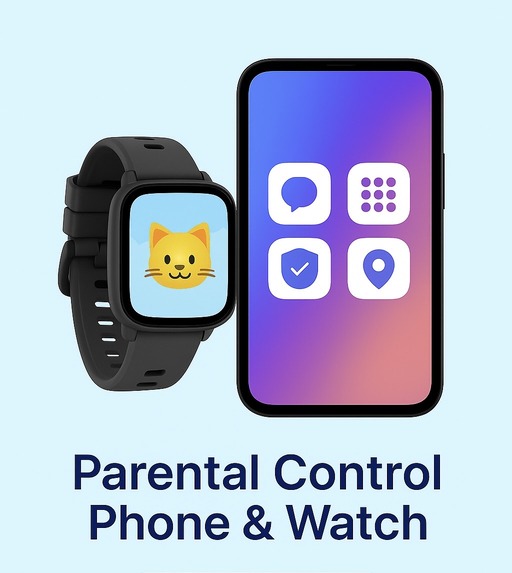
✔ Detects cyberbullying, predators, & threats
✔ Tracks real-time GPS location
✔ Sends instant alerts for risky activity
✔ Blocks explicit, violent, or unsafe websites
✔ Sets screen-time limits and bedtime schedules
✔ Lets parents approve contacts & apps
✔ Keeps data private & secure
children covered by our phone
severe self-harm situations detected
severe bullying situations detected
.png)




.png)
Emily R.
Mom of a 14-year-old
Miranda L.
High School Parent
Sophia T.
Mom of 2 Teens
.png)
Why Your Kid’s First Phone Should Be Smarter Than Smart
The Problem No One Talks About: Smartphones Weren’t Made for Kids
Smartphones are powerful. Too powerful.
They’re built for adults who can self-regulate screen time, ignore harmful content, and handle social pressure — not for a 9-year-old trying to navigate the world.
Giving your child a regular smartphone today is like handing them the keys to a car without driver’s ed. They’re online before they understand boundaries, privacy, or consequences.
And parents are left playing digital janitor — scrambling to delete apps, block websites, and undo damage after it’s already done.
Why “Kid-Friendly” Phones Are Finally the Answer
In the past, there were only two options: a flip phone (too limited) or a full smartphone (too risky). But now there’s a better choice — smartphones designed specifically for kids, with built-in parental controls, screen time limits, and safety-first technology.
These phones aren’t dumbed down — they’re smart in the right ways.
Imagine a phone that:
- Notifies you if your child is texting about violence, bullying, or risky behavior
- Blocks explicit websites and content automatically
- Lets you approve app downloads before they happen
- Disables deleting texts so important conversations aren’t erased
- Tracks location without constant check-ins
- Keeps your child’s data private from third parties
This isn’t helicopter parenting. It’s digital training wheels — a safer way to learn responsibility.
True Story: How a Smart Kid’s Phone Saved One Family from a Crisis
Janelle, a mom of two, gave her 11-year-old son a parental control phone after a bad experience with a regular iPhone. She thought she could control it with screen time settings — but within a month, he had figured out how to bypass restrictions, joined hidden group chats, and was exposed to content no child should see.
She switched to a child-safe smartphone with built-in monitoring tools. Within a week, she received an alert about potential bullying language in a text message. The conversation revealed that her son was being pressured to share inappropriate photos “as a joke.”
Janelle stepped in just in time.
That phone didn’t just monitor — it protected.
What Kids Really Want Isn’t Privacy — It’s Trust
Surprisingly, many tweens and teens prefer having some boundaries. It helps them feel supported, not spied on.
Child-safe phones are transparent. Kids know what’s being monitored. There’s no sneaky spyware — just clear digital guardrails they can grow with.
When kids trust the tech, they’re less likely to rebel.
When parents trust the tools, they parent with calm.
So When Should Your Child Get a Phone?
It’s not about age. It’s about readiness — and having the right phone.
Instead of asking:
“Should I give my 10-year-old a phone?”
Ask:
“How can I give them a phone that protects their development, not just their screen?”
📱 The Future of Phones Is Purpose-Built
In 2026, the norm won’t be giving a 9-year-old an adult smartphone with TikTok and Instagram. The norm will be kid-first tech:
- Devices built around safety and maturity
- Parent dashboards that give insights, not just control
- Custom content filters that evolve with your child
- Tools that teach kids digital literacy and balance
Your child’s first phone should not just call or text — it should teach, protect, and empower.
Be the Gatekeeper, Not the Jailkeeper
You don’t have to spy. You don’t have to ban everything.
You just have to choose tools that build trust without sacrificing safety.
A phone built for your child is more than a device — it’s a digital guardian that grows with them.